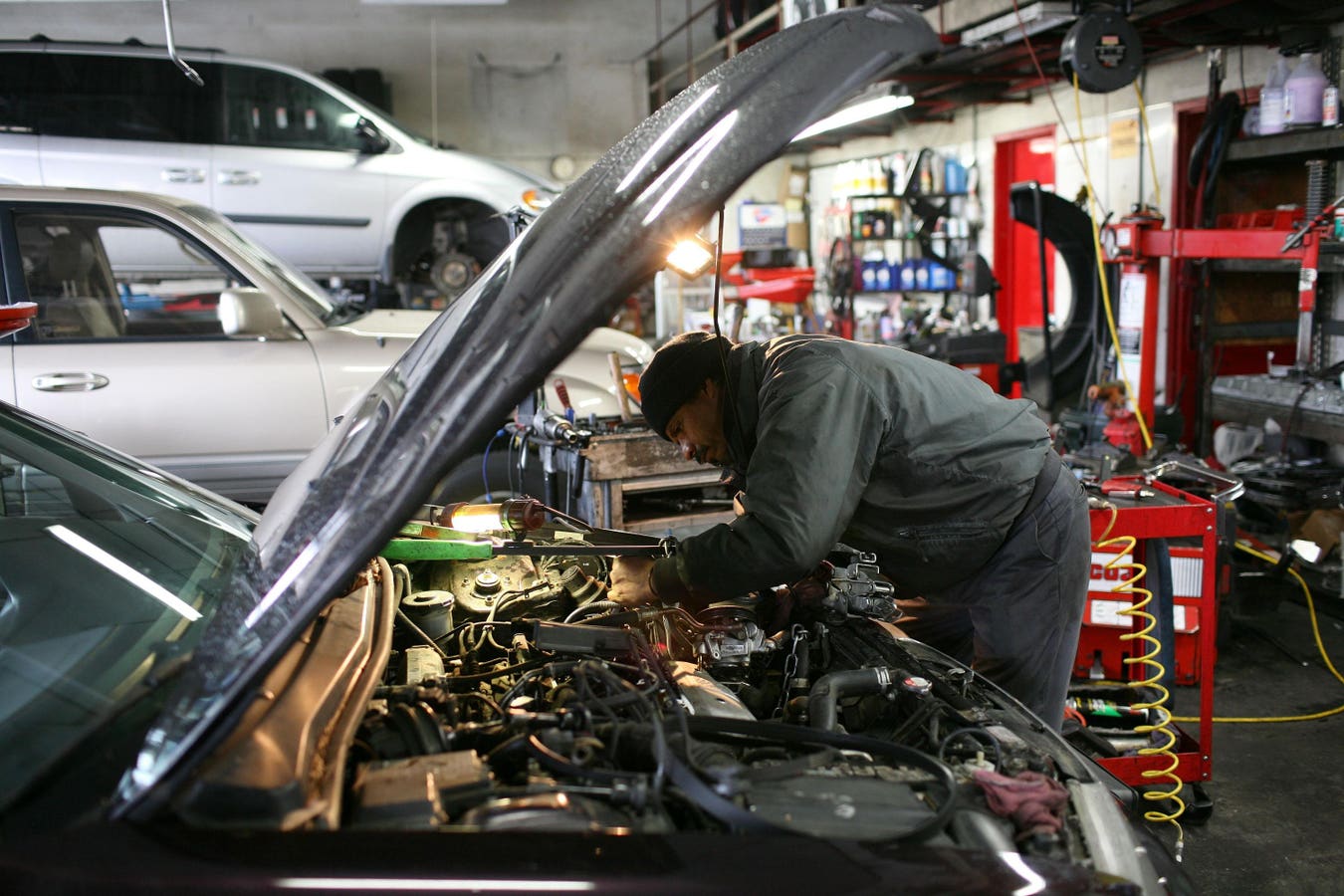
Study Reveals Customer Service Dissatisfaction For Non-Tesla EV Owners
Customer satisfaction with dealer service ticked up slightly in the J.D. Power 2024 U.S. Customer … [+] Service Index (CSI) Study. (Photo by Justin Sullivan/Getty Images)
Getty Images
While overall customer satisfaction with the service experience at dealerships increased, not so for owners of non-Tesla battery-electric vehicles, according to the J.D. Power 2024 Customer Service Index, or CSI, released Thursday.
This year’s CSI was based on responses from 64,781 verified registered owners and lessees of 2021 to 2023 model-year vehicles with ratings based on a 1,000-point scale.
The overall score for the industry rose five points from last year to 851 despite lingering challenges of parts and labor shortages, however, satisfaction was lowest among non-Tesla EV owners.
The key beef is poor execution of recalls according to Chris Sutton, vice president of automotive retail at J.D. Power.
Chris Sutton, vice president of automotive retail at J.D. Power
J.D. Power/Linkedin
“About 25% of the EV service is recall right now and the feedback associated with those recalls has not been great,” said Sutton in an interview. “Honestly, it doesn’t have to be that way. Sometimes the recall experience is okay but for most of the EV models it hasn’t been. When we rate these individual areas, like service advisors, they’re usually very good, but with the EV customers, that’s been a bit of a challenge.”
Indeed, the study showed non-Tesla EV customers simply don’t trust their dealerships to perform complex repairs or “provide useful guidance.”
A Tesla showroom and service center, in Burbank(Kent Nishimura / Los Angeles Times via Getty Images)
Los Angeles Times via Getty Images
On a seven-point scale, dealer trust among non-Tesla owners stood at 5.62, compared to 6.0 for owners of gasoline-power vehicles and 5.74 for plug-in hybrid owners.
Tesla is not rated as part of CSI but if it was, the EV company would rate about 850, just a point off the industry average, according to Sutton.
“When a Tesla customer goes to the Tesla facility for service, not great,” said Sutton. “But Tesla in particular is really using mobile service, where the service is done at the customer’s home or office. Let’s say I got a software reflash and customer feedback from those customers is great so I think it’s kind of instructive for the industry that these customers respond really well to mobile services just from a convenience standpoint.”
A key finding of the study was the cost of repairs, regardless of powertrain or market segment, has escalated over the past two years.
The average amount spent on what the study termed “a recent dealer service visit” rose 30% over the past two years for owners of both premium and mass-market vehicles.
The average bill for owners of premium vehicles was $380, up $66 from 2023, while owners of mass market vehicles paid $140, a year-over-year increase of $15, according to the study.
Inflation and higher costs for parts and labor were flagged as reasons for those increases for customers whose repairs weren’t covered by warranty or a maintenance contract.
Lexus was the top-rated premium brand in the 2024 J.D. Power Customer Service Index Study.
J.D. Power
Looking at how individual brands performed, for the third straight year, Lexus was the highest rated among premium brands with a score of 897, followed closely by Porsche at 894 and Cadillac at 883.
Buick was best among mass-market brands with a score of 887, followed by MINI at 884 and Subaru at 877.
Buick was the highest rated mass-market brand in the J.D. Power 2024 Customer Service Index, … [+] followed by MINI and Subaru.
J.D. Power
While the average industry score did rise, there are lingering issues that must be addressed, the study found.
Those issues primarily revolve around how long it takes to book a service appointment and the lengthening wait time for repairs to be completed.
Owners of mass market vehicles are waiting an average of 5.2 days for an appointment at the dealer, up from 4.8 days in 2023, while owners of premium vehicles wait 5.4 days, with wait times in both segments “still significantly higher when compared with pre-pandemic levels,” according to the study.
Once the appointment is booked and the vehicle is in the shop, the waiting game continues to devolve, driving 35% of mass-market brand customers to aftermarket repair shops where waits are shorter and prices are lower, the study said.
In addition, 55% of the customers in the study chose aftermarket service because the shops were in more convenient locations.
Despite those challenges, dealers are making great strides to reduce waiting times and improve communication with customers using technology.
“One of the areas we’ve been trending is this issue is, get your vehicle, type your vehicle in for service, the technician can actually take a picture or video of the issue and then send that to you and either make recommended work for it. We found that customers have responded very well to that,” said Sutton. “The usage of it has gone up quite a bit in the last three years for the premium segment—it’s actually doubled over three years. Customers respond very well to things like text updates when advisors use tablets.”
Sutton notes the increase in this year’s overall industry score was driven by improvements among mass-market brands rather than the traditional lift from premium brands and that, “was really good to see.”


